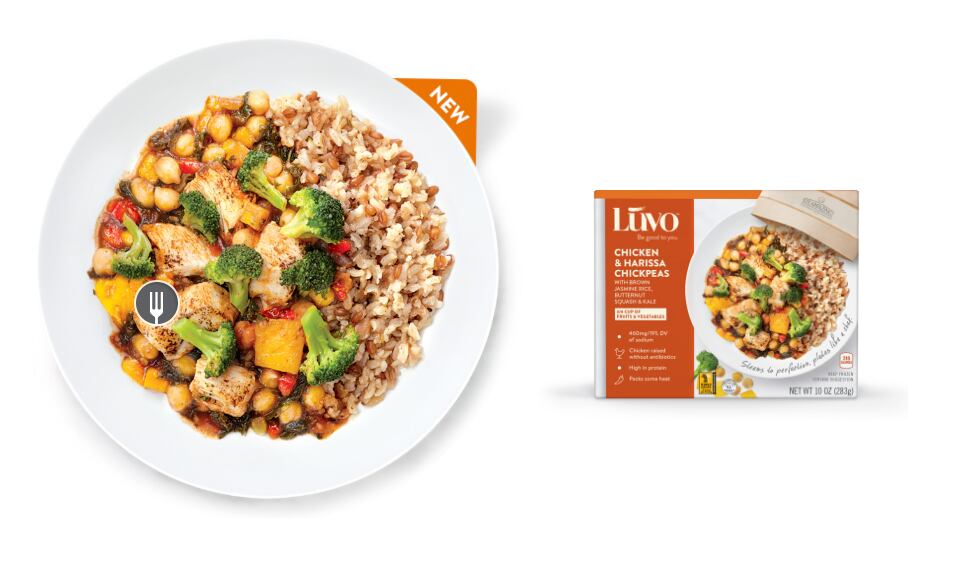Bowls of grains topped with vegetables or meat was a popular trend that chefs, cookbook authors, and trend forecasters all agreed on during the recent Whole Grains Council conference in Rosemont, IL, which focused on the foodservice sector with the title ‘Whole Grains Away from Home.’
1. Bowls of grain in the packaged food sector

One expert told FoodNavigator-USA that this trend has spread over into CPG in the form of heat-and-eat entrees. “The grain bowl trend in fast casual is spilling over to the supermarket aisles too, as we're seeing more one-dish full meals with an emphasis on clean label,” said Cynthia Harriman, director of food and nutrition strategies at the Oldways Whole Grains Council.
Her trend analysis was based on data from the organization’s database of recent product applicants for the Whole Grain Stamp, filtered to show only products in the US, Canadian, and Mexican markets.
“For too long ‘prepared food’ and ‘better for you’ have been mutually exclusive—but even people who care about clean labels and real food get crunched for time. We may LOVE to cook, but also appreciate some backup foods in our freezers for those busy nights,” she said about the trend.
“Luvo's product line is perhaps the best example of this, with products like ‘Great Karma Coconut Curry Planted Power Bowl’ and a ‘Mighty Masala and Greens Planted Power Bowl’ that we just reviewed and approved this month,” Harriman added. “For grains, they feature a base of brown Jasmine rice.”
2. Shifting sweet to savory
Another trend Harriman noticed was whole grain products that have been traditionally sweet now going savory. “Perhaps it's because of the increasing attention paid to added sugars,” she said.

“Jalapeño Popcorn (Skinnypop) and Sriracha Popcorn (from Barrel O' Fun) are two popcorn examples, and we're also seeing savory bars giving super-sweet granola bars a run for their money. Kashi, for instance, has a line of Savory Bars including ‘Chickpea Curry and Chili,’ ‘Basil White Bean & Olive Oil,’ and ‘Quinoa Corn and Roasted Pepper,’” she added.
3. Teff and sorghum in finished products take over some of wheat’s share
“Teff and sorghum are showing the biggest percentage increase when we look at the incidence of grain ingredients in products applying to use the Whole Grain Stamp, with teff more than tripling in incidence this year compared to the sum of all the previous years,” Harriman said.
Similarly, sorghum went up 40% in incidence, which reflects numbers shared by Sorghum Checkoff. “Of course, when numbers are small to begin with, any increase translates to a big percentage,” Harriman added. “When we look at percent of products, we see that in 2016, teff was an ingredient in about 4.6% of newly-approved products, and sorghum was in about 6.4% of newly-approved products.”
Looking at the incidence of grain ingredients, Harriman added that there was a big drop in wheat. “[It] was 47% of all listed grain ingredients in 2005-2015, and was just 17% of all listed grain ingredients in 2016,” she said.
“This reflects the incredible growth of the ‘back bench’ of the grains team,” she added.
“Back in 2005 when we introduced the Whole Grain Stamp, whole grain was largely synonymous with whole wheat, because manufacturers were making most products with wheat, corn, rice, and oats, and not much else. Now there's simply a much greater variety of grains being used in products labeled whole grain.”
National acceptance, international attention
It’s been over a decade since the Whole Grain Council launched the Whole Grain Stamp to help products denote how many grams of whole grain per serving are in it. Today it can be found in 55 countries and come in multiple languages such as Spanish, Portuguese, Chinese, and Arabic.
“There’s been an explosion internationally using the stamp,” Caroline Sluyter, program manager of the Whole Grain Stamp, told FoodNavigator-USA. “There’s been a huge amount of growth in Brazil, and a lot of new products just in the last month in Ecuador.”
According to a survey on US consumers presented by director of client solutions Mark DiDomenico from Datassential, 35% of people say they ‘love’ whole grains, 37% say they ‘like’ them, 22% are neutral, and just 6% say they avoid whole grains.
“We've really moved beyond ‘acceptance’ (which implies a tentative perhaps grudging relationship) to something better described as ‘welcoming’ and ‘relishing,’” said Cynthia Harriman, director of food and nutrition strategies at the Oldways Whole Grains Council.
